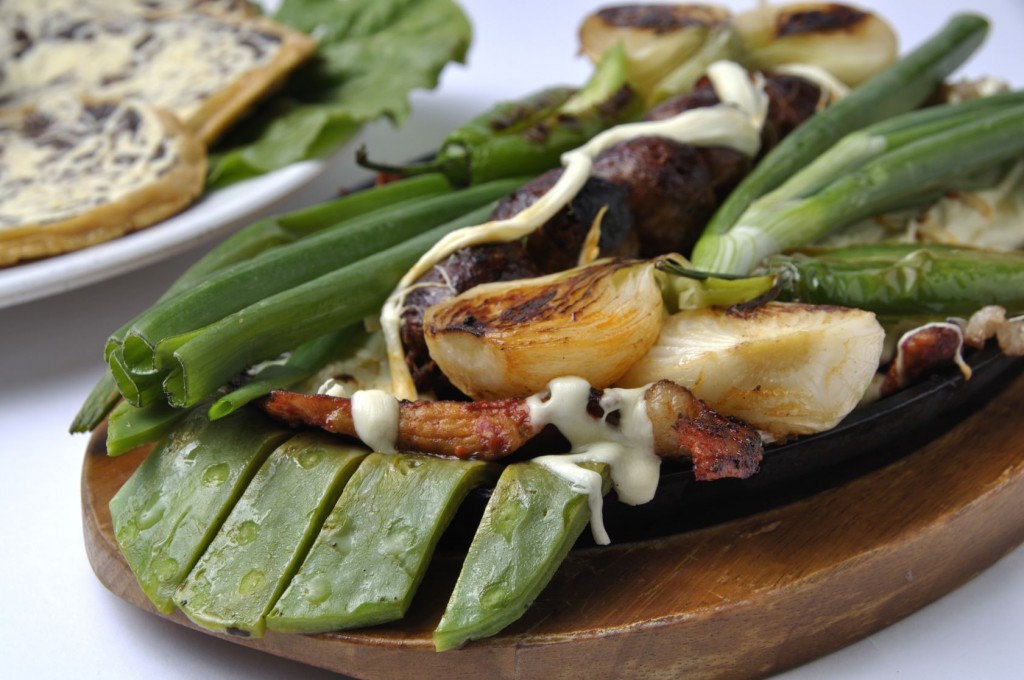A new series, in which we tell you what to do with that food item that you have no idea what to do with (or even what the heck it is). Hopefully you’ll find something interesting — and some cool ideas for how to use it.
Cactus Paddles
What Is It?
You’ve probably seen them at the greengrocer. They are sometimes called cactus paddles, tuna fruit, and, most typically, nopales. They are exactly what you think they are. They look like a part of a cactus because are a part of a cactus. “But… it’s a cactus,” you say. Indeed. The type of cactus paddles that you will see down the fresh produce aisles come from the upuntia variety of cacti, and is the same plant that blooms into brightly-colored fruit (typically magenta, but also orange, red, or yellow) known as the prickly pear. Turns out the rest of it is just as edible.
These paddles, when bought fresh, vary in size but are typically large, flat, and oval-shaped. They look like big, green ping-pong paddles! Being an evergreen, the cactus paddles are available all-year round and should be firm when picked up. Be careful when inspecting, however, as the spikes can be harmful.
This popular form of edible cactus is extremely popular in Mexico, where they are also harvested most commonly. They are sold fresh as street food in Mexico, having had their spikes removed and the flesh cut to order. Foreigners would perhaps be surprised to see these large items on the shelves, especially since they need careful preparation before being able to eat, but are an essential when visiting Mexico. Crunchy and juicy when raw, and with a texture reminiscent of okra when cooked, their popularity is on the rise. Especially so across Europe, as their taste and health benefits (as well as the ease of harvesting) turn them into popular addition to many dishes.
Is It Healthy?
Definitely. Besides having one of the lowest calorie counts of a vegetable – 16 calories per 100g of flesh – cactus paddles are rich in dietary fiber, anti-oxidants, and manganese. They also boast high levels of vitamins such as thiamine, riboflavin, niacin, B-6, and pantothenic acid, as well as moderate levels of vitamin A and average levels of vitamin C. Small amounts of important, minerals like calcium, iron, potassium, and magnesium are found, too. Minor, but better than nothing, right?
The flesh is perhaps best for its help in weight loss, thanks to its fiber content as well as it being very low in fat and cholesterol. It’s immune-boosting and anti-inflammatory properties aid in the health and well being of a person, which can only help when attempting to lose weight.
What Do I Do With It?
First things first: you gotta learn how to prepare nopales. The prickles that cover the skin need to be removed carefully, but once you get the hang of it it will become second nature. Follow this easy method to become a fast expert. Try and keep as much of the skin on as possible, as it provides a vital crunchy texture to whatever meal you are planning to prepare.
While cactus paddles can be cut into diced squares or stripes and added to salads raw, they become even better when cooked. They can be a vibrant, colorful addition to a barbecue cookout by simply placing them on a grill for 10 to 12 minutes on each side, brushing with olive oil occasionally while they cook. Like corn, they can be eaten with your hands when you’re done so they make a great addition for adults and children alike.
If you want to do something a bit bigger, then make this cactus salsa that goes perfectly as a dip, on top of a steak, or with tortillas.
- 2lbs of cactus paddles
- 6 tomatoes
- 3 or 4 jalapeno peppers
- 3 cloves of garlic
- ½ medium onion
- Cilantro
- 1 can of red kidney beans, black beans and pinto beans
- Salt and pepper
- Lime juice
- 2 avocados (optional)
To prepare simply dice the cactus paddles, tomatoes, pepper, onion and avocado (if you choose to include it), and throw it together in a bowl. Crush the garlic, finely chop the cilantro and add them to the bowl with a pinch of salt and pepper as well as the beans and lime juice (be as liberal with this as you wish). Let it sit overnight to allow flavors to infuse. To make a more traditional dip, you can puree the beans and add the diced ingredients to that, making it an easy accompaniment to tortilla chips.
Where Do I Get It?
You will obviously have better luck in areas like California, but it is increasingly popular elsewhere. If you cannot find it in your local supermarket or greengrocer, then try and locate a Latino specialty store. They will likely have it, and potentially already prepared, too.














-300x200.jpeg)
-300x213.jpeg)










